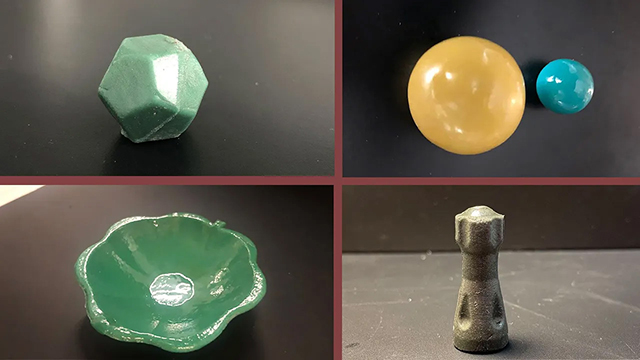The 15th century represents an important transition in art history, as oil paints gradually replaced egg-based tempera paints as the painting medium of choice. During the transition period, artists sometimes mixed materials, combining oils with tempera paint to create a blend known as tempera grassa. Reporting in ACS Applied Polymer Materials, researchers explored the effects of adding oil to tempera paint to better understand how various paint formulas would affect the appearance of finished works. Surprisingly, they found that adding oils to tempera paint does not slow its drying time, as had long been assumed. But artists may have had other reasons for creating the mixture, as the researchers discovered.
Source Article
“Tempera and Tempera Grassa—From Wet Paints to Solid Films”
ACS Applied Polymer Materials
Corresponding authors: Ophélie Ranquet, Ph.D.; Celia Duce, Ph.D.; Patrick Dietemann, Ph.D.; Norbert Willenbacher, Ph.D.
Transcript
Narrator: This blue goo could help solve a mixed-media mystery from Italian art history. These 15th-century Italian paintings are embedded with clues to an important transition in art history. For centuries, artists had used water-based paints with egg yolk to bind the pigments, known as tempera paint. Then in the 15th century, they started using oil paints, which produce richer colors and seamless blending, because they take longer to dry than tempera.
During this transition, some artists painted with both tempera and oil paints. One way experts can tell them apart in paintings is by looking at differences in the surface texture and color blending. And artists also experimented with mixing the two materials together. This painting has details that look like a cross between tempera and oil paints… at least, to an expert. The art world calls this mixture tempera grassa, meaning fatty tempera.
It was assumed that artists mixed oils into their tempera to slow the drying process, making it easier to blend their brushstrokes. But researchers wanted to better understand how adding oil to tempera would affect how the paint handled and how it looked in the finished work. So they mixed their own tempera grassa paints, then analyzed their properties, down to the microscopic level.
They compared the brushing texture for various mixtures and measured how long it took the paints to dry on different surfaces. Surprisingly, they found that adding oil to tempera actually does not increase its drying time significantly. However, the researchers did notice differences in brushing texture between the two types of paint. Pure tempera soaked into the paper quickly instead of flowing nicely across the page. But adding oil helps keep the paint soft and spreadable even as water is absorbed into the surface. So the researchers think that artists could have used oil to adjust how smoothly their paint flowed onto their artwork. They hope this work will provide new tools for interpreting a painting’s visible clues about paint composition, helping scholars and art enthusiasts understand the creative process behind historic paintings.
To embed this video, please visit YouTube and use the Share function.









